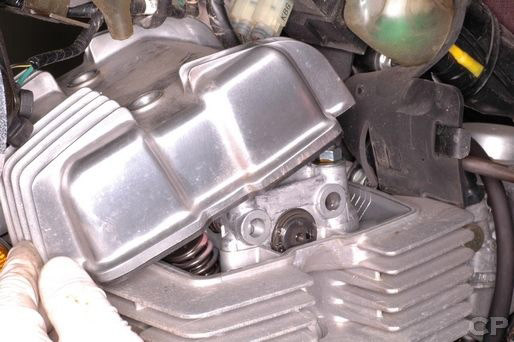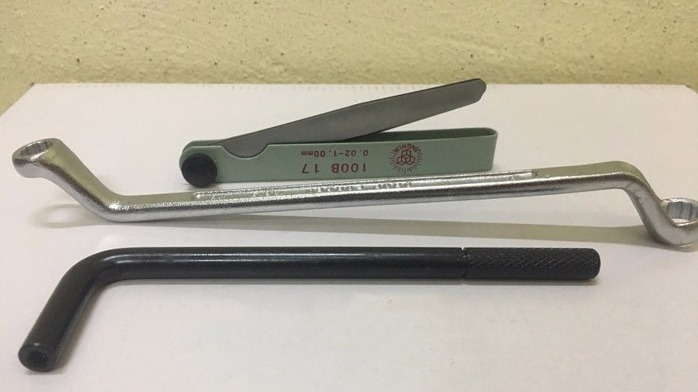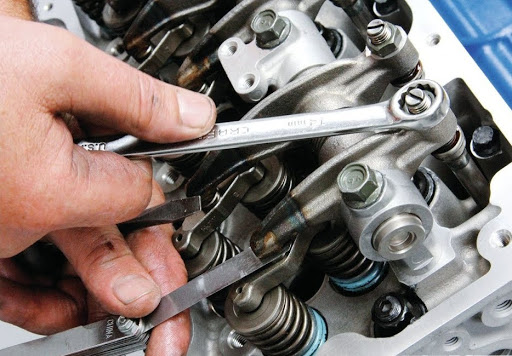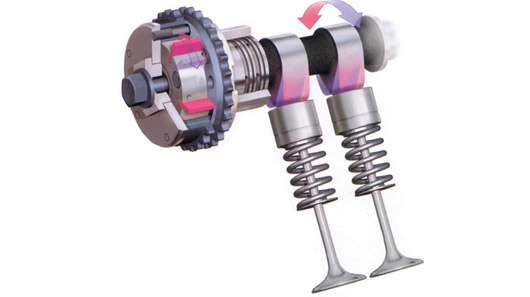Motorcycles always captivate us with their engine blocks and their operating mechanisms, leaving us curious about how they work. Inside the engine, there is a crucial component that needs periodic adjustment and maintenance to ensure the smooth and powerful operation of the engine. This component is called the valve, which plays a direct role in the fuel intake-compression-exhaust process of the engine block.
Many of us have heard the term “motorcycle valve” in repair shops or everyday conversations. But what exactly is a valve? What is its structure and how does it work? In this article, we will delve into these questions and provide you with the answers.
Understanding the valve
A valve is a vital part of a motorcycle engine’s air intake system. It is responsible for opening and closing to control the flow of the fuel-air mixture into and out of the combustion chamber. Mechanics and repair shops often refer to this component as the “mushroom” due to its mushroom-like shape.

A motorcycle valve located inside the engine head
A motorcycle valve consists of several parts, including the mushroom, body, tail, base, spring, and valve guide tube.
- The mushroom valve can be categorized into three types: flat mushroom, concave mushroom, and convex mushroom. Each type has its own advantages and disadvantages.
- The valve body guides the valve during its operation.
- The valve tail is designed to attach the valve spring.
- The valve base is a simple cylindrical ring with a beveled surface that contacts the mushroom valve’s beveled surface.
- The valve guide tube helps prevent erosion of the engine wall at the valve body contact area.
- The valve spring functions as a recoil force, ensuring the tight closure of the valve and preventing any impact on the valve’s cam surface during the opening and closing process.
Structure of a motorcycle valve
Working of a motorcycle valve
In a 4-stroke engine, the valve operates in synchronization with the engine’s cycles, opening and closing accordingly. Let’s take a closer look at each stroke:
– Intake Stroke: During this stroke, as the piston moves from the top dead center to the bottom dead center, the intake valves open while the exhaust valves close. This allows the fuel-air mixture to be drawn into the combustion chamber.
– Compression Stroke: In this stroke, the piston moves from the bottom dead center to the top dead center. All valves, including the intake and exhaust valves, close to compress the fuel-air mixture in the combustion chamber, ensuring proper mixing.
– Power Stroke: During this stroke, the spark plug ignites the compressed fuel-air mixture in the combustion chamber. The piston is compressed and moves from the top dead center to the bottom dead center. Both the intake and exhaust valves remain closed. The resulting explosion generates power for the engine block.
– Exhaust Stroke: The piston’s movement in this stroke is similar to that of the compression stroke as it moves from the bottom dead center to the top dead center. At this point, the exhaust valves open, expelling the exhaust gases from the engine. Subsequently, the exhaust valves close, and the cycle repeats.
Therefore, it is crucial to ensure the valve’s proper functioning as an open valve would lead to an unclosed combustion chamber, resulting in pressure loss and difficulties in ignition, ultimately reducing the motorcycle’s power output.
Adjusting motorcycle valves
Valves play a critical role in the operation of a motorcycle engine. Thus, any problems with this component, no matter how minor or severe, directly impact the engine’s performance. After prolonged usage, exposure to the environment, inadequate cleaning, and lack of lubrication can lead to severe consequences. Therefore, it is essential to adjust the valves following the steps below.
To adjust motorcycle valves, you will need a specialized toolset, including a valve clearance adjuster, valve measuring blade, valve clearance gauge, and some necessary tools like spanners to open the engine head cover.

Tools used for adjusting motorcycle valves
Firstly, remove the motorcycle’s engine head cover, usually located on top of the engine head, protruding from the cover surface. After properly removing the cover, use your thumb to press the recoil, turning the flywheel in the cylinder head in the correct direction to fully open the valves. Adjust the intake valves by positioning the measuring blade in the middle between the recoil end and the valve tail. Use a screwdriver to adjust the recoil and measuring blade to achieve a suitable fit, which depends on the bike, engine displacement, and condition.

How to adjust motorcycle valves
Through this article, we hope you now have a good understanding of what a motorcycle valve is and how to adjust it. Adjusting valves at home is not a difficult task, but it does require professional knowledge and adherence to specific specifications. It is advisable to take your motorcycle to a reputable repair shop for professional and accurate valve adjustment to avoid any damage to this sensitive part of the engine.
Kuro











































